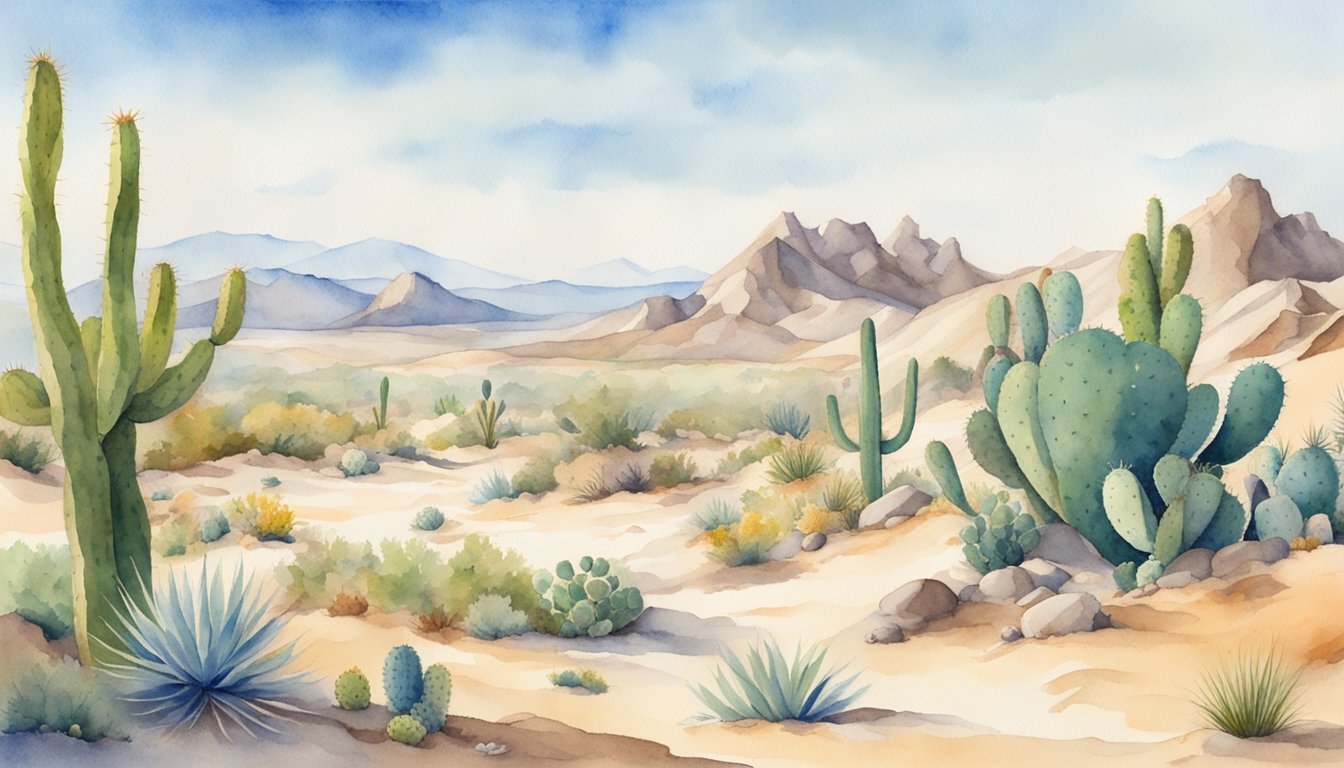Understanding Deserts
Climate Characteristics
Deserts are characterized by their aridity, receiving less than 250 millimeters (10 inches) of rain per year. In these regions, evaporation rates exceed precipitation levels, creating a harsh environment for plant and animal life. Despite their reputation for being hot, not all deserts experience extreme temperatures. Some deserts have cold winters or remain cold year-round, with daytime temperatures sometimes reaching as high as 54°C (130°F) in hot deserts.
Climate change has led to an increase in desertification, the process by which productive land becomes desert. This phenomenon can exacerbate water scarcity and reduce natural habitats for plants and animals.
Types of Deserts
Deserts can be categorized into four major types: hot and dry, semi-arid, coastal, and cold. Each type of desert has unique features, flora, and fauna adapted to survive in their respective environments.
-
Hot and dry deserts: These are what most people envision when they think of deserts. They typically have high daytime temperatures, cool nights, and minimal vegetation. An example of a hot and dry desert is the Sahara Desert in Africa.
-
Semi-arid deserts: These deserts receive slightly more rain than the hot and dry deserts, and as a result, they support more plant and animal life. The Chihuahuan Desert, located in the southwestern United States and northern Mexico, is an example of a semi-arid desert.
-
Coastal deserts: Usually found along the western coasts of continents, coastal deserts have cool, foggy, and moist conditions. The Namib Desert in Africa is an example of this type of desert.
-
Cold deserts: These are deserts that experience cold temperatures, even during the summer months. The Gobi Desert in Mongolia is one such cold desert.
Despite their arid conditions, deserts are home to a diverse array of plants and animals that have evolved to survive in these harsh environments. Over one billion people, one-sixth of Earth’s population, also live in desert regions and must adapt their lifestyles to the challenging climate.
Desert Biodiversity and Ecology

Native Flora and Fauna
Desert ecosystems are home to unique plants and animals that have adapted to harsh living conditions, including extreme temperatures and limited water availability. Some of the most remarkable plants that can thrive in deserts are cacti, which have adapted by storing water in their stems. Other types of vegetation found in desert regions include shrubs and succulents.
The wildlife in desert areas is equally fascinating. Animals such as camels, fennec foxes, and desert tortoises have evolved various adaptations enabling them to survive in these harsh conditions. Many desert animals are nocturnal, which allows them to avoid the scorching daytime temperatures and search for food during the cooler night hours.
- Plants: cacti, shrubs, succulents
- Animals: camels, fennec foxes, desert tortoises
Ecosystem Services and Adaptations
Desert organisms have developed unique adaptations that allow them to survive in their arid environments. For example, camels are adapted to store water in their humps and have long eyelashes to protect their eyes from sand. Similarly, the fennec fox has large ears that help regulate its body temperature, disperse heat, and improve its hearing to locate prey.
In addition to the impressive adaptations of individual organisms, desert ecosystems as a whole provide valuable services. These ecosystems support the livelihoods of more than one billion people worldwide, contributing to local and global economies. Desert ecosystems also play a crucial role in carbon storage, climate regulation, water purification, and the conservation of biodiversity.
To sum up, desert ecosystems are characterized by an astounding variety of flora and fauna, each adapted to their unique environment. These ecosystems play an essential role in providing valuable ecosystem services and supporting the livelihoods of people around the world.

